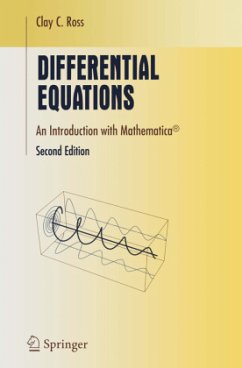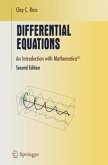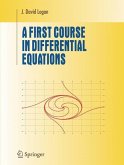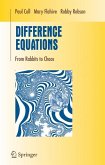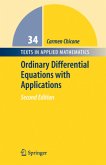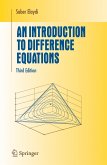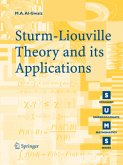The first edition (94301-3) was published in 1995 in TIMS and had 2264 regular US sales, 928 IC, and 679 bulk.
This new edition updates the text to Mathematica 5.0 and offers a more extensive treatment of linear algebra. It has been thoroughly revised and corrected throughout.
Goals and Emphasis of the Book Mathematicians have begun to find productive ways to incorporate computing power into the mathematics curriculum. There is no attempt here to use computing to avoid doing differential equations and linear algebra. The goal is to make some first ex plorations in the subject accessible to students who have had one year of calculus. Some of the sciences are now using the symbol-manipulative power of Mathemat ica to make more of their subject accessible. This book is one way of doing so for differential equations and linear algebra. I believe that if a student's first exposure to a subject is pleasant and exciting, then that student will seek out ways to continue the study of the subject. The theory of differential equations and of linear algebra permeates the discussion. Every topic is supported by a statement of the theory. But the primary thrust here is obtaining solutions and information about solutions, rather than proving theorems. There are othercourses where proving theorems is central. The goals of this text are to establish a solid understanding of the notion of solution, and an appreciation for the confidence that the theory gives during a search for solutions. Later the student can have the same confidence while personally developing the theory.
This new edition updates the text to Mathematica 5.0 and offers a more extensive treatment of linear algebra. It has been thoroughly revised and corrected throughout.
Goals and Emphasis of the Book Mathematicians have begun to find productive ways to incorporate computing power into the mathematics curriculum. There is no attempt here to use computing to avoid doing differential equations and linear algebra. The goal is to make some first ex plorations in the subject accessible to students who have had one year of calculus. Some of the sciences are now using the symbol-manipulative power of Mathemat ica to make more of their subject accessible. This book is one way of doing so for differential equations and linear algebra. I believe that if a student's first exposure to a subject is pleasant and exciting, then that student will seek out ways to continue the study of the subject. The theory of differential equations and of linear algebra permeates the discussion. Every topic is supported by a statement of the theory. But the primary thrust here is obtaining solutions and information about solutions, rather than proving theorems. There are othercourses where proving theorems is central. The goals of this text are to establish a solid understanding of the notion of solution, and an appreciation for the confidence that the theory gives during a search for solutions. Later the student can have the same confidence while personally developing the theory.
From the reviews of the second edition:
"The introductory differential equations textbook presents a convenient way for professors to integrate ... . Each new idea is interactively developed ... . After first learning about the fundamentals of differential equations and linear algebra, the student is immediately given an opportunity to examine ... . the student is encouraged to think about what the computations reveal, how they are consistent with the mathematics ... . The new revised edition updates ... and offers a more extensive treatment of linear algebra."
(Zentralblatt für Didaktik der Mathematik, January, 2005)
"This text instructs students in solving and using differential equations with both paper-and-pencil techniques and the Mathematica symbolic manipulation program. ... This is a good, thorough standard textbook with good explanations."
(Steven Dunbar, MathDL, January, 2005)
"The introductory differential equations textbook presents a convenient way for professors to integrate ... . Each new idea is interactively developed ... . After first learning about the fundamentals of differential equations and linear algebra, the student is immediately given an opportunity to examine ... . the student is encouraged to think about what the computations reveal, how they are consistent with the mathematics ... . The new revised edition updates ... and offers a more extensive treatment of linear algebra."
(Zentralblatt für Didaktik der Mathematik, January, 2005)
"This text instructs students in solving and using differential equations with both paper-and-pencil techniques and the Mathematica symbolic manipulation program. ... This is a good, thorough standard textbook with good explanations."
(Steven Dunbar, MathDL, January, 2005)

